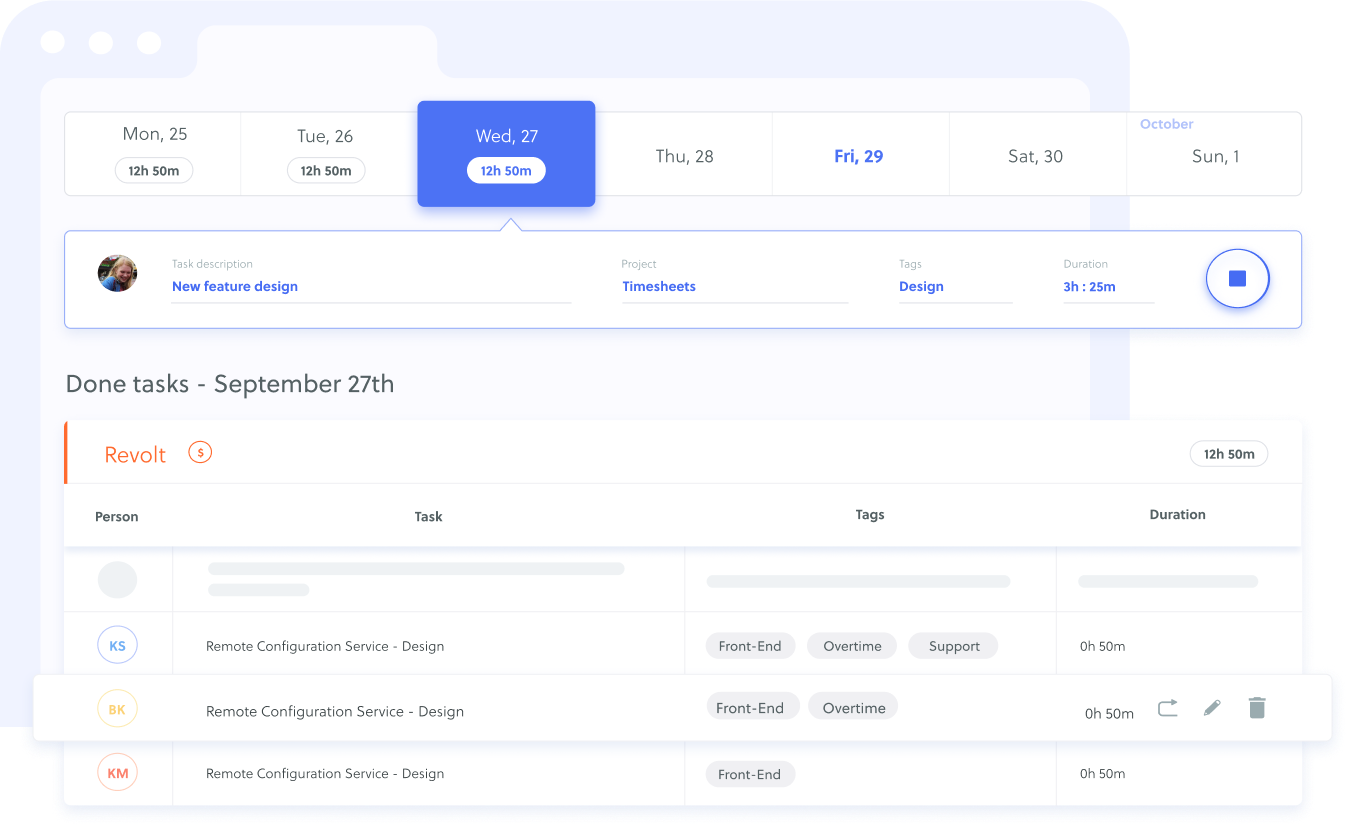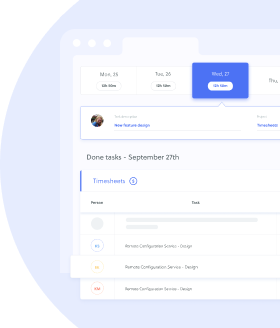Calculating the hours worked by your employees will help you ensure they get the correct payment. There are various methods to monitor and calculate employee hours worked. With this, you should carefully select the best timekeeping process and teach your team how to use it. Before we proceed, let us first know what working hours are.

Table of Contents
What are Working Hours?
Working hours are the hours of the day wherein work is done like in an office. These hours are commonly between 9 am to 5 pm. On the other hand, long working hours are working days longer than 8 hours and working weeks which are longer than 40 hours.
How to Calculate Worked Hours
The following are the steps on how to calculate hours worked.
1. Find out the start and end time
If you use a manual process, such as a physical timesheet, you should identify the times your workers clocked in and out each day of a pay period. For example, a team member began working from 7:45 am and finished at 5 pm.
2. Convert time into military time (24 hours)
In converting time into military time, add 12 afternoon hours, then the morning hours stay the same. In addition, you don’t have to use am and pm because morning and night time differ. An example of it is 7:45 will be 7:45 hours, and 5 pm will be 17:00 hours.
3. Turn the minutes into decimals
You should convert minutes to decimals by dividing the minutes by 60. So, 7:45 represents 7 hours and 45 minutes. Then, divide 45 by 60 to get 0.75. With this format, 7:45 will be 7:75, and 17:00 will be 17.
4. You can now subtract the start time from the end time
Subtract the time the worker clocked in from when they clocked out to get the total hours. For example, 17 – 7.75 = 9.25
5. Then, subtract unpaid time taken for breaks
You should subtract time if a worker takes an unpaid break, like going to a doctor’s appointment. An example is if the worker took a 1-hour lunch break. In this case, 9.25 – 1 = 8.25 worked hours.
With these details, you can calculate the gross wage by multiplying the worked hours by the hourly wage.
How Can You Keep Track of Worker Hours
It is essential to keep accurate records of the hours that your employees work. With that, they can get the proper payment for all of their work. Moreover, it is also beneficial to get detailed records during an audit. The following are some methods for tracking your worker hours:
Mechanical time clock
The mechanical time clock is a device wherein the workers place a paper time card as they begin and stop working. The device marks the time and date on the time card. Then, the employer will calculate employee hours worked with the information.
Handwritten time-cards
The team members can write down their working hours on a document and forward it to the employer. Usually, team members submit a handwritten time card once weekly or every 2 weeks.
Time clock software
Team members may record their working hours on mobile devices or computers using clock software. Workers can log in to an application or website, then click the button to clock in and out. The software can be location-enabled to ensure team members can clock in and out while working. The time clock software also calculates the worked hours per pay period automatically.
Electronic time clock
This method also uses the same principle as the mechanical time clock but is paperless. The team member shows a a badge in front of the electronic time clock and stamps a digital time card for recording date, start time, and end time. Some electronic time clocks operate using a PIN or fingerprint instead of a badge.
The better way to track employee hours
There is a better way to track hours worked.


What are Part-Time and Full-Time Work
When it comes to working hours, there’s part-time and full-time work. What’s the difference between them? Read further.
Part-Time Work
Part-time work is working hours less than full-time employment. With this schedule, you have more flexibility to keep other responsibilities outside of your job. Keep in mind that part-time work usually lacks the benefits you can get from full-time work.
Meanwhile, these working hours can be inconsistent and erratic from week to week. An example of a part-time job schedule can be Mondays to Wednesdays around 7 am to 11 am, and Saturdays and Sundays from 11 am to 7 pm.
Full-Time Work
Full-time work is the maximum amount of time a worker can work in a specific period. According to FLSA or The Fair Labor Standards Act, a federal regulation, the maximum time employees can work weekly is around 40 hours, and the additional hours are considered overtime.
Most employers may set a different amount of working hours for full time as long as it doesn’t pass 40 hours weekly. For example, you can put 32 hours each week full-time for your workers. If your company has 50 workers or more, you must provide benefits, including health insurance.
What is Overtime Work
Overtime work is the working hours that team members work, which exceed full time. Based on FLSA or Fair Labor Standards Act, the overtime pay rate is 1.5 x the regular hourly rate. The number was also called time and a half. Companies may select to pay more than and a half.
An example is when the hourly wage is $10, you should multiply it by 1.5 to get the rate for overtime.
$10 x 1.5 = $15
If the worker gets $10 each hour and works for 43 hours weekly, the overtime amount is around 3 hours. You can calculate the pay for that week by calculating the pay at the standard rate for the first 40 hours. Then, time and a half for the overtime:
($10 x40) + ($15 x 3) = $400 + $45 = $445
Remember that companies are not mandatory to pay overtime for salaried workers. Additionally, part-time hourly workers should exceed 40 hours weekly to get overtime pay. There are some states which have rules for overtime that take into account hours worked more than 8 each day. So, you should check your particular state for the calculations.
Other types of working schedules
Aside from full-time, part-time, and overtime, the following are other types of working hours.
Fixed work schedule
Fixed work is a timetable that includes a similar number of days and hours worked each week. These working hours tend to remain consistent if the worker and the employer agree on the number of days and hours. One example of a fixed work schedule is Mondays to Fridays, around 8:30 am to 5 pm. It can also be Thursdays to Sundays from 3 pm to 11 pm.
Rotating shift work schedule
A rotating work schedule cycles the workers through the day, night shifts, and swing. The cycle distributes various shifts between the workers. With that, no one will be stuck in less desirable hours each shift.
Although it is not a typical work schedule, it is present in many careers, including construction, military, power plants, roadwork jobs, and health care. The shifts can cycle quarterly or weekly, based on the required type of work.
The transition between the shifting schedules may be tricky for some employees. Eating and sleep patterns can change, so workers may see their friends and family less due to the working schedule.
This timetable comes with many benefits. Workers can spend more time with friends and family during regular working hours. The working hours may cycle between day shifts from 7 am to 3 pm, swing shifts around 1 pm to 9 pm, and night, weekend, or overnight shifts.
Flexible work schedule
A flexible work schedule is less rigid compared to a fixed work schedule. Employers and workers can work together to identify the number of days and hours of the week the team member will work.
Based on the employer’s rule, workers can be expected to work a minimum amount of hours or be at work at a specific daily block of time. However, shifts can be switched often with other team members to satisfy the employer’s needs and the team member’s busy life.
The flexible work hours may vary infinitely. One example is Mondays 9 am to 12:30 pm, Saturdays and Sundays 2 pm to close, and Tuesdays from 11 am to 4 pm.
Why Is it Important to Calculate Employee Hours Worked?
Calculating the employee hours worked is essential in a company. Moreover, it is important to calculate worker hours worked accurately. Keep in mind that incorrect salary payments can lead to conflict. The following are some advantages of calculating employee hours worked properly.
Establish positive working relationships
One advantage of accurately calculating employee hours worked is that it can help build positive working relationships. It can prevent unnecessary conflict affecting your team members and your company. It is also said that the workers’ attitude greatly influences their productivity. Proper payment of salaries to your employees can create a sense of fairness among the team members. So, you can also establish a positive working environment for all your employees.
Employees can receive proper payment
If employees’ working hours are calculated accurately, they can receive the right amount for their work. It allows them to stay motivated and inspired to perform their roles and responsibilities satisfactorily.
Offer reference if there’s a query about working hours.
The employer can refer to the calculations of working hours if there is a query about it. The employer can show proof that the working hours are correctly calculated and that the remuneration is paid accurately.
The employer may save money and enhance their profits
You can also save money and make your company more profitable by accurately calculating your employees’ working hours. It can help to avoid overpayment due to inaccurate working hours recording. Note that salaries are among the bigger business costs.
It can be used to draft pay slips
The working hours’ record of the employees can be used to draft pay slips. It can also determine productivity, design shift rosters, and get insights into the working schedule’s impact on the employee’s safety and health.
Essential document to resolve disputes
The attendance register is also an important document that can help resolve disputes. It can also help to solve a potential conflict in a good manner.
Enhanced communication within the business
Calculating the employees’ worked hours correctly can also improve communication between the employer and the workers. Remember that accurate information, including the working hours, can help create a foundation of effective communication within an organization.
Enhance team member management
Accurate recording of worked hours of your employees can help you enhance the overall team member management. It will also keep you compliant with the labor legislation.
You don’t need to worry about an inspection by the Department of Employment and Labor.
You can have peace of mind if the Department of Employment and Labor conducts an inspection regarding the accurate recording of working hours. With this, you can avoid penalties from the authorities by not following their standards.
Helps to retain employees
Valuable employees can help you to achieve the success of your company. By calculating the working hours of the workers accurately, you can keep loyal employees, which are key to achieving the goals and missions of your business. Your workers will be more motivated to improve their productivity by giving them the proper payment for their job.
Generally, the calculation employee working hours is necessary for successful business management. It will also help to encourage your team members to perform better on their specific responsibilities.
Final Words
To sum it up, there are different methods to track employee hours as they work. Moreover, there are many working hours schedules, so you can set one for your company. You can use the steps above to calculate team member hours worked.







